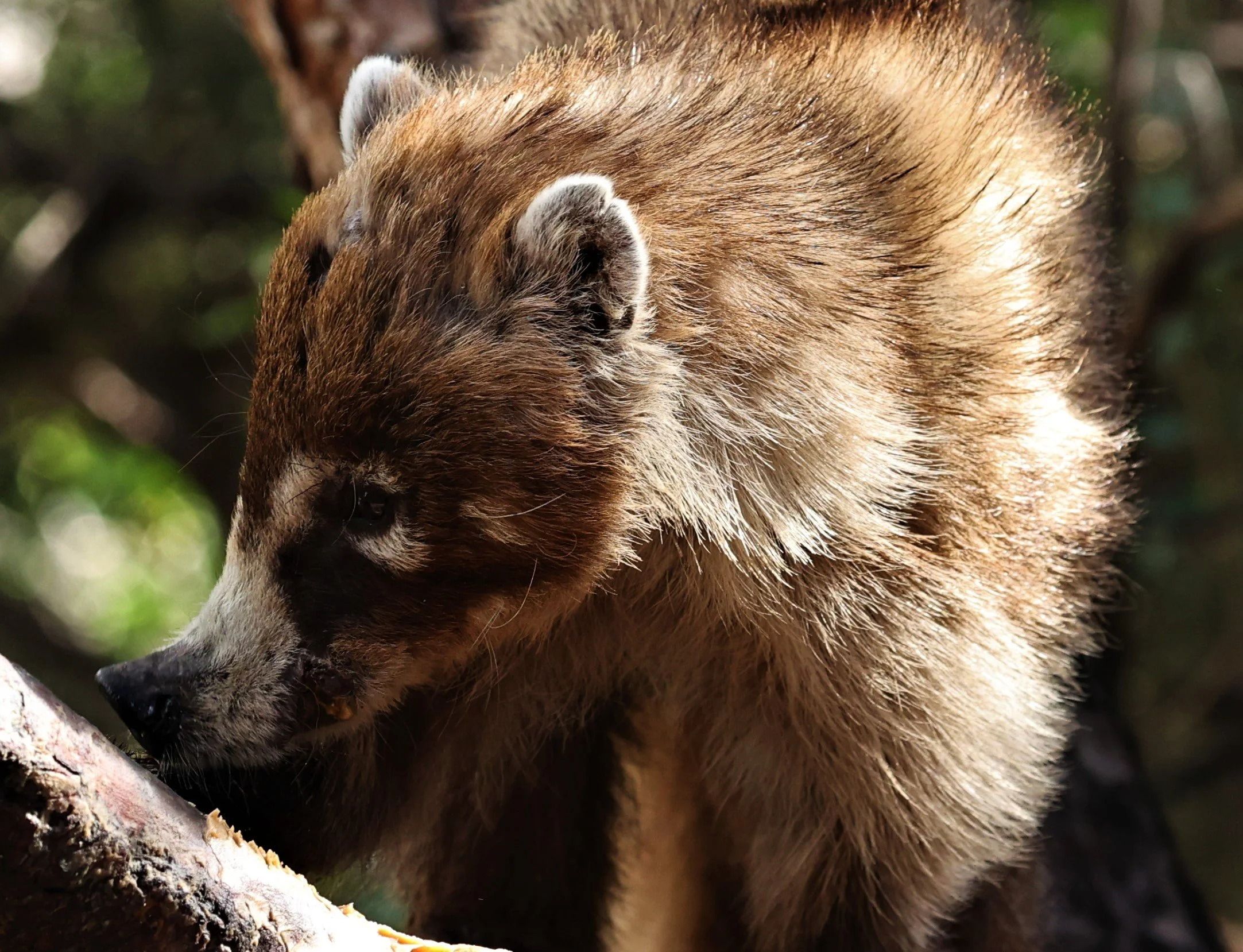
Genus Nasua, Coati
White-nosed Coati distribution
Nasua is a genus of coatis of the family Procyonidae. Two additional species of coatis, commonly known as mountain coatis, are placed in the genus Nasuella.
Nasua differs from Nasuella in being larger and having larger canine teeth, but preliminary genetic evidence (cytochrome b sequences) suggests that Nasuella should be merged into Nasua.[3] Other genetic studies have shown that the closest relatives of the coatis are the olingos (genus Bassaricyon),from wh ich they diverged about 10.2 million years ago
N. narica (Linnaeus, 1766) - White-nosed Coati, pizote, or antoon - Southwestern United States (southern New Mexico, Arizona, but no longer Texas), Mexico, Central America, and northwest Colombia - my images are from Southeastern Arizona. (See below gallery)
N. nasua (Linnaeus, 1766) - South American coati - South America - my images are from Kapawi Forest, Ecuador. (See below gallery)
The White-nosed Coati (Nasua narica), also known as the coatimundi is a species of coati and a member of the family Procyonidae (raccoons and their relatives). Local Spanish names for the species include pizote, antoon, and tejón, depending upon the region. It weighs about 4–6 kg (8.8–13.2 lb). However, males are much larger than females: small females can weigh as little as 2.5 kg (5.5 lb), while large males can weigh as much as 12.2 kg (27 lb). On average, the nose-to-tail length of the species is about 110 cm (3.6 ft) with about half of that being the tail length.
The white-nosed coati is distributed from southeastern Arizona and New Mexico through Mexico and Central America; in Colombia, it is limited to the far northwestern region near the border with Panama. It inhabits wooded areas in tropical and subtropical dry broadleaf forests and in tropical and subtropical moist broadleaf forests at elevations from sea level to 3,000 m (9,800 ft).
Coatis from Cozumel Island have been treated as a separate species, the Cozumel Island coati, but the vast majority of recent authorities treat it as a subspecies, N. narica nelsoni, of the white-nosed coati. They are smaller than white-nosed coatis from the adjacent mainland (N. n. yucatanica), but when compared more widely to white-nosed coatis the difference in size is not as clear. The level of other differences also support its status as a subspecies rather than separate species.
White-nosed coatis have also been found in Florida, where they were introduced. It is unknown precisely when introduction occurred; an early specimen in the Florida Museum of Natural History, labeled an "escaped captive", dates to 1928. There are several later documented cases of coatis escaping captivity, and since the 1970s there have been a number of sightings, and several live and dead specimens of various ages have been found. These reports have occurred over a wide area of southern Florida, and there is probable evidence of breeding, indicating that the population is well established.
The individual in the images below was photographed at Cave Creek Ranch in Southeastern Arizona.







































































































































































































South American Coati (Nasua nasua)
The South American Coati (Nasua nasua), also known as the ring-tailed coati, is a coati species and a member of the raccoon family (Procyonidae), found in the tropical and subtropical parts of South America. An adult generally weighs from 2–7.2 kg (4.4–15.9 lb) and is 85–113 cm (33–44 in) long, with half of that being its tail. Its color is highly variable and the rings on the tail may be only somewhat visible, but its most distinguishing characteristic is that it lacks the largely white snout (or "nose") of its northern relative, the white-nosed coati.
The South American coati is widespread in tropical and subtropical South America. It occurs in the lowland forests east of the Andes as high as 2,500 m (8,200 ft) from Colombia and The Guianas south to Uruguay and northern Argentina. Nasua nasua occupancy is significantly and negatively related to elevation but positively related to forest cover.
It has been recorded in west Ecuador, and north and west Colombia. In Argentina, it has been recorded in Santa Fe and Salta Provinces.
The only documented records of white-nosed coati in South America are from far northwestern Colombia, in the Gulf of Urabá region, near Colombian border with Panama. The smaller mountain coati lives foremost at altitudes above the South American coati, but there is considerable overlap.
It has been introduced and naturalized in the island of Mallorca, where it is considered an invasive species.
Link to new gallery for South American Coati from 2023
South American Coati (Nasua nasua) - Ecuador, Brazil & Bolivia






